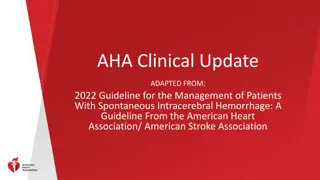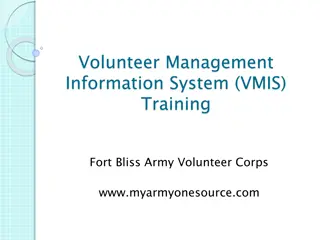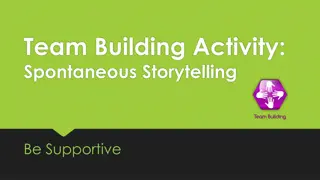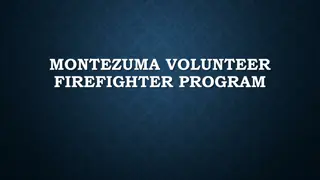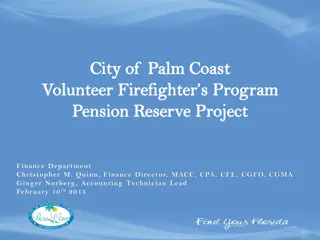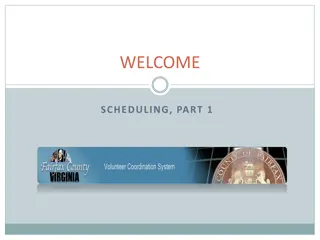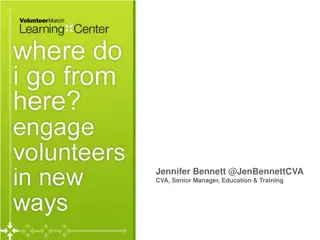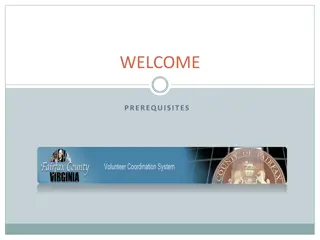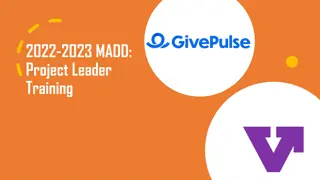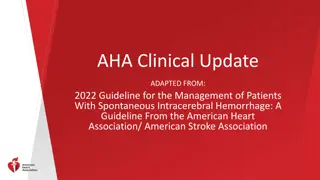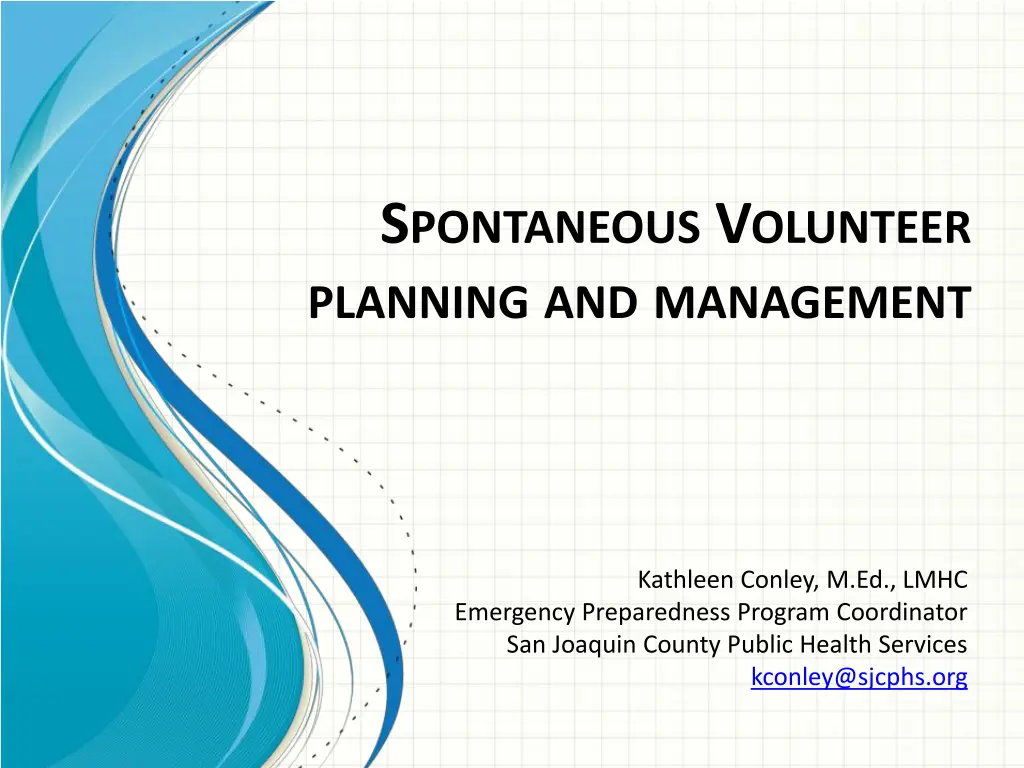
Spontaneous Volunteer Management in Emergency Preparedness
Learn about the challenges of utilizing spontaneous volunteers in disasters and how to effectively plan and manage them within the incident command system. Explore strategies to optimize volunteer resources while ensuring safety for all involved.
Download Presentation

Please find below an Image/Link to download the presentation.
The content on the website is provided AS IS for your information and personal use only. It may not be sold, licensed, or shared on other websites without obtaining consent from the author. If you encounter any issues during the download, it is possible that the publisher has removed the file from their server.
You are allowed to download the files provided on this website for personal or commercial use, subject to the condition that they are used lawfully. All files are the property of their respective owners.
The content on the website is provided AS IS for your information and personal use only. It may not be sold, licensed, or shared on other websites without obtaining consent from the author.
E N D
Presentation Transcript
SPONTANEOUS VOLUNTEER PLANNING AND MANAGEMENT Kathleen Conley, M.Ed., LMHC Emergency Preparedness Program Coordinator San Joaquin County Public Health Services kconley@sjcphs.org
Theyre Coming! We Better Prepare .Now! Welcome Introductions and Housekeeping Pre and post-workshop questionnaires Evaluations
Overview During disasters, large numbers of people unaffiliated with traditional emergency response organizations converge at the scene to offer assistance. Spontaneous volunteers can be a significant resource, but are often ineffectively used and can actually hinder emergency activities by creating health, safety, and security problems and distracting responders from their duties.
Overview The challenge is to capitalize on the outpouring of volunteer resources while ensuring safety and responders ability to effectively perform tasks within the established incident command system. Systems-based approaches to planning for spontaneous volunteer management in disasters have been developed that are informed by public health practice.
Assumptions When disaster strikes a community, trained and affiliated emergency management and nonprofit organizations automatically respond according to pre-established plans. Each of these organizations has a specific role to play in ensuring an effective response to, and recovery from, the disaster s devastation.
Assumptions Spontaneous, unaffiliated volunteers our neighbors and ordinary citizens often arrive on- site at a disaster ready to help. Yet because they are not associated with any part of the existing emergency management response system, their offers of help are often under-utilized and even problematic to professional responders.
Objectives (Participants) Orient participants to the roles, responsibilities, resources and management of Spontaneous Volunteers in the aftermath of a large-scale emergency or disaster event. Provide workshop participants with the tools to determine their capacity to recruit, receive, screen, credential, train, deploy, supervise and de-mobilize spontaneous volunteers.
Objectives (Community Response) Minimize response and recovery costs to the community. Minimize disruption to first responders by spontaneous unaffiliated and non-coordinated affiliated volunteers. Ensure the safety of volunteers, responders, and the community.
Whats the Bridge? We want to build our organizational and community capacity, the bridge, to prevent, prepare, respond and recover from all-hazards emergencies or disasters.
Decision Matrix Are volunteers your responsibility? 1 What do you have in place today? 2 What do you need to plan and exercise to have a robust VMS? 3
Terminology Spontaneous Volunteer Affiliated Volunteer Unaffiliated Volunteer (SUV) Volunteer Management System (VMS) The organizational, operational and integrated methodology to manage volunteers. Volunteer Reception Center (VRC) The site/facility where Spontaneous Volunteers will report for screening and deployment.
A TALEOF TWO CITIES ANDA SMALL TOWN
CaseStudy Hampden County Tornadoes EF 3-4 June 1, 2011 Hampden County Tornadoes EF 3-4, 39 mile path, west to east 1 Hour 10 minutes on the ground Killed three people, injured 300 people in Springfield alone 500 people homeless in Springfield's MassMutual Center arena. Hundreds of homes destroyed. More than 48,000 electricity customers lost power. Over $150 million in damages 2 -3 year recovery
Three Communities Three Responses No plans for Spontaneous Volunteer Management Existing volunteer infrastructure included: ARC, MRC, CERT and Salvation Army What worked? What didn t work? AARs and IPs
Summary Define your challenges Use the pre and post workshop questionnaire as a guide Follow the PHEP capabilities Set realistic expectations Assessment, Implementation and Exercising are complex processes. Keep your eye on the goal Building your organizational and community capacity to prevent, prepare, respond and recover from all-hazards emergencies or disasters.
Resources FEMA Spontaneous Volunteer Management Marin Sheriff Spontaneous Volunteer Management Volunteer Fairfax VRC Video Volunteer Video JITT Columbia, Missouri Western Mass Medical Reserve Corps wmmrc.org
Contact Information Kathleen Conley, M.Ed., LMHC Emergency Preparedness Program Coordinator San Joaquin County Public Health Services kconley@sjcphs.org 209 468-9361

